How to turn ‘no-trespassing environments’ into environmentally and socially sustainable parks
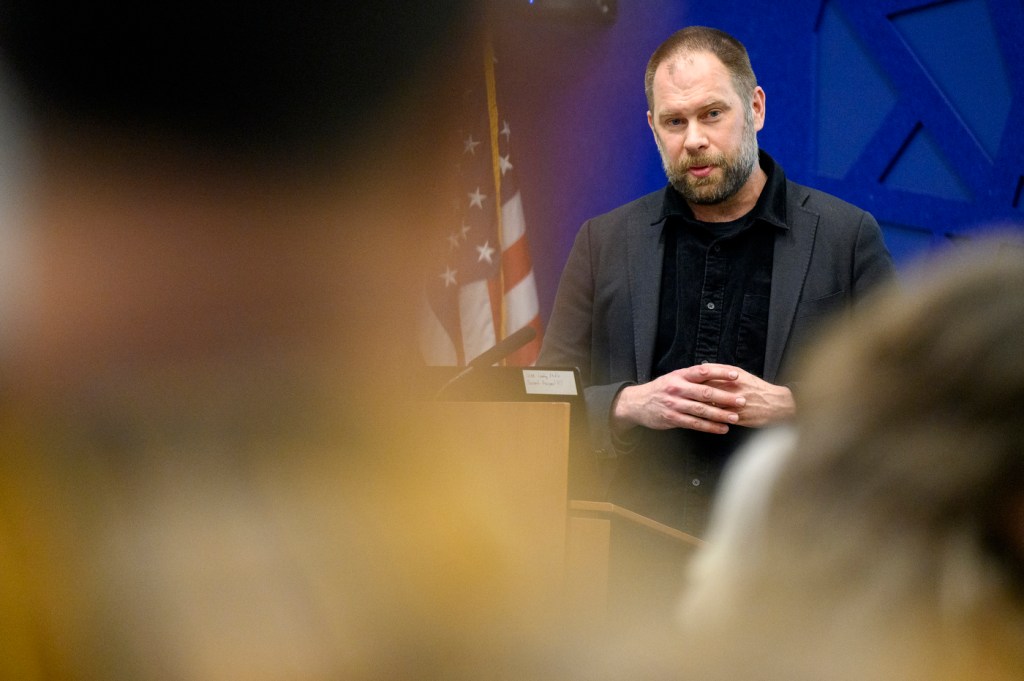
An industrial waterfront where road salt is stored each winter or an 8-acre underpass dividing two Boston neighborhoods may not seem like the most prominent sites for an ambitious architect.
But for Dan Adams — a professor and director of the School of Architecture at Northeastern University — these “no-trespassing environments” are not only worthy of design, they can be models of environmental and social sustainability.
“We’ve got to change the parameters in these no-trespassing environments,” Adams said during Tuesday’s 61st annual Robert D. Klein lecture. “It’s really been about creating a new model for all the ways that an architect should interact with the built environment.”
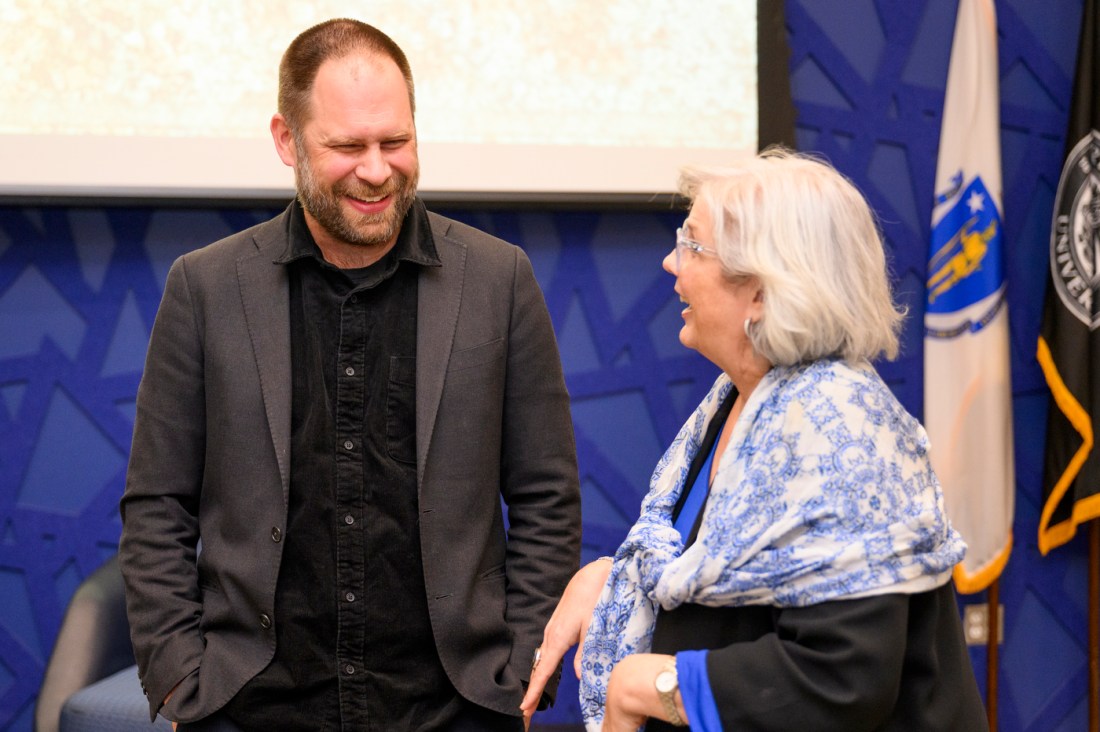
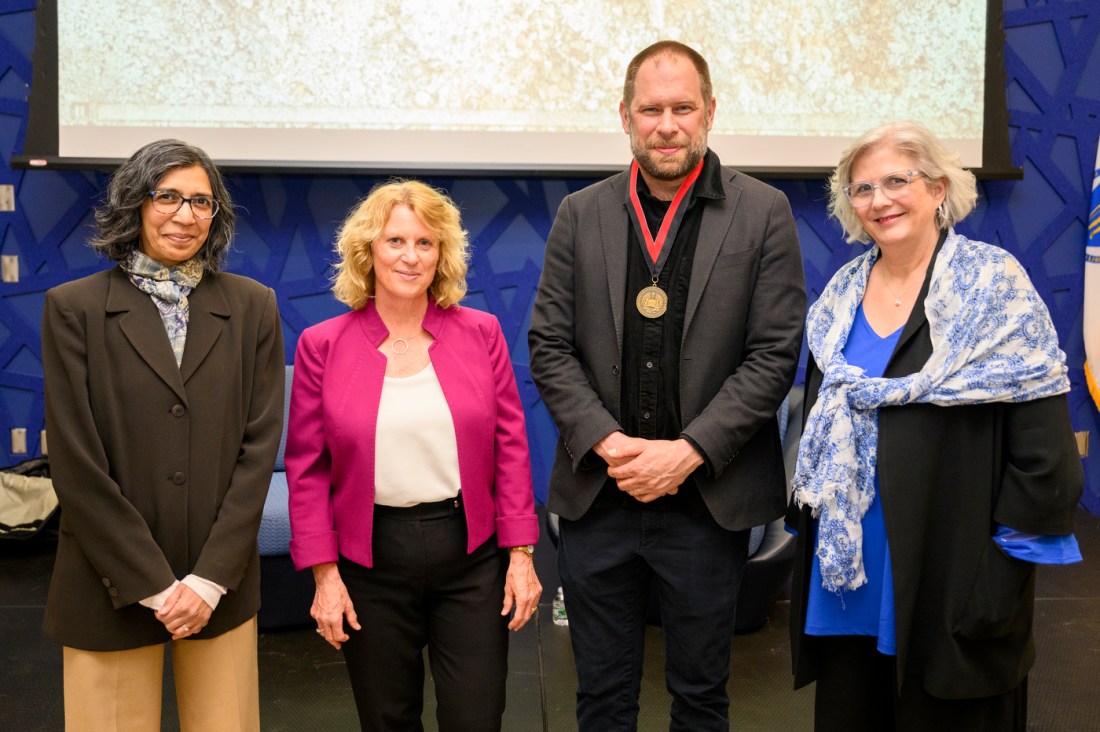
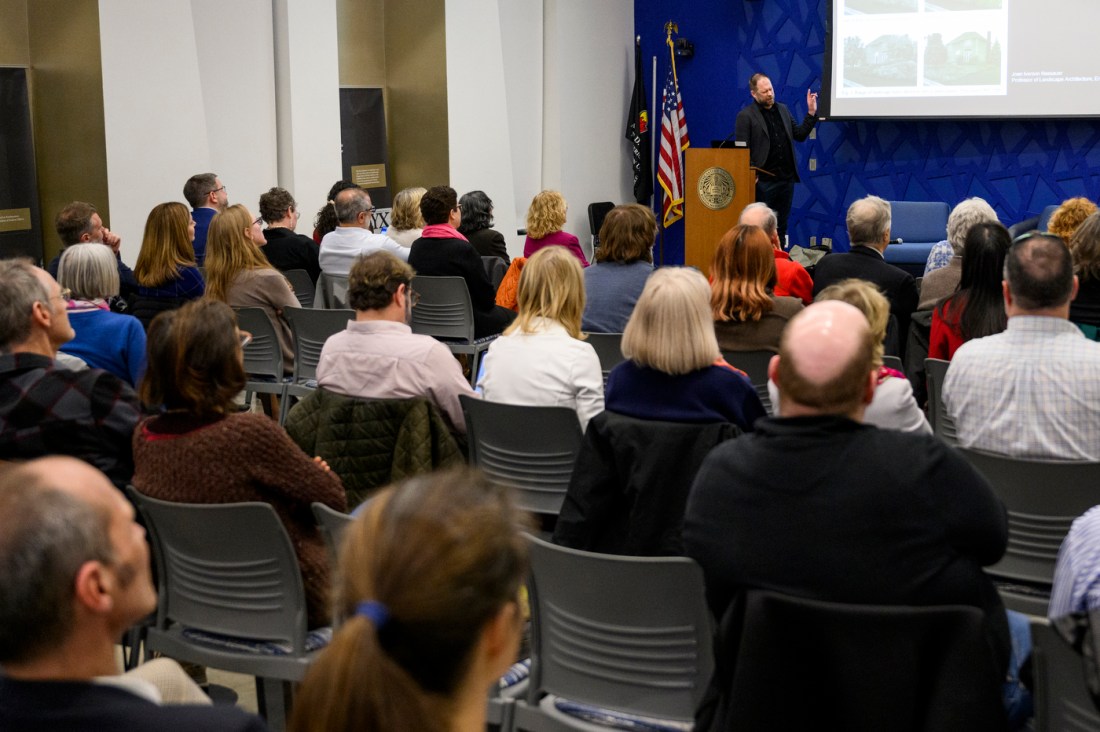

The lecture, held at the Cabral Center on Northeastern’s Boston campus, is delivered annually by a faculty member who has contributed with distinction to their field of study.
In addition to his work at Northeastern, Adams is co-founder of Landing Studio design firm, which he runs with his wife and fellow Northeastern architecture professor Marie Law Adams.
The firm focuses on designing and realizing environmentally and socially sustainable infrastructure in the built environment.
In other words, one might say Adams views infrastructure not as something to work around, but as something to work with.
To do this, the firm is guided by several principles.
These include that a project be a collaboration among community partners to best reflect their needs; that the architects develop an ongoing, long-term relationship with the community partners and the project site; and that the design can “nudge” users toward thinking about new ideas of environmental and community sustainability, gauge their reaction and, if necessary, adapt.
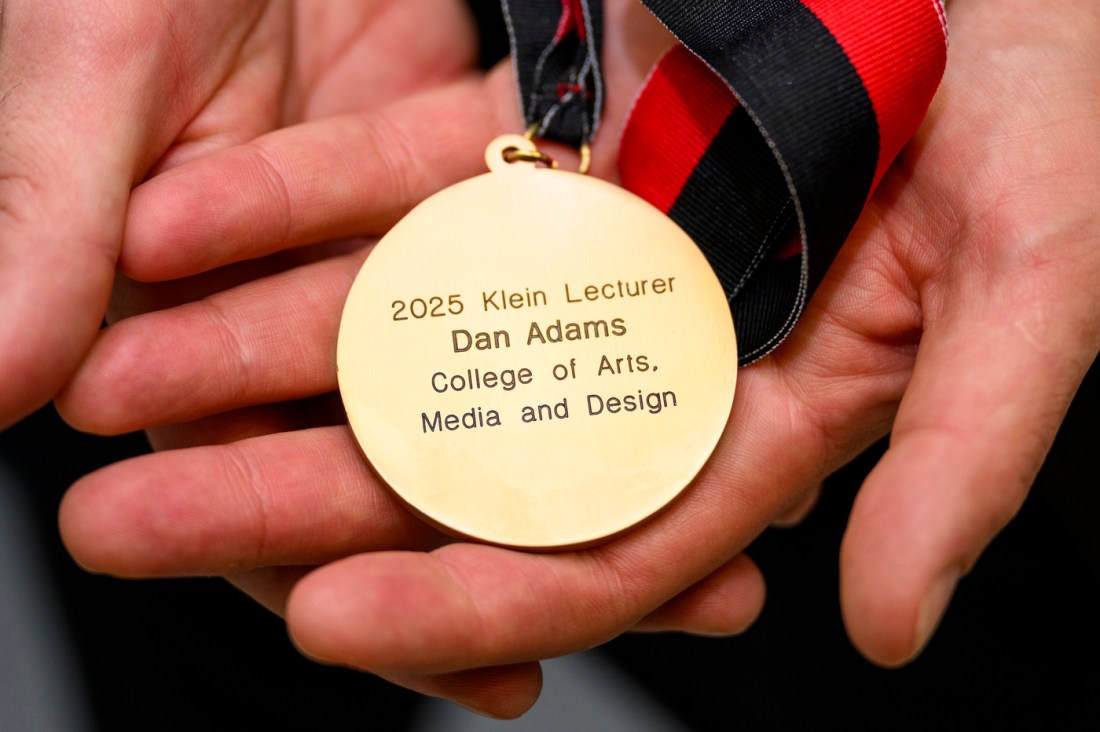

“Architects are usually hired in finite, singular contracts to build something — it’s really a bad way for architects or shapers of built environments to be,” Adams said. “We do something, it doesn’t work, and we do it again — we hone our knowledge through that process and keep nudging the project in a certain direction.”
For instance, a former asphalt batching plant on the Chelsea waterfront where road salt is stored has been adapted into a mixed-use space that — in addition to allowing maritime shipping and industrial uses — features a popular community basketball court, hosts high school dances on its dock and even provided a stage for a local production of “Hamlet” where the title character delivered his famous soliloquy from atop a pile of road salt.
But perhaps most notably, the site was used as a space to distribute food to Chelsea residents during the COVID pandemic.
Editor’s Picks
The Boston Globe recently referred to the city as “creating an entire emergency ecosystem,” in which the site played a prominent role, Adams noted, proudly.
The 8-acre underpass dividing South Boston and the South End neighborhoods, meanwhile, was converted into an urban park that not only includes water-filtration and trash-collection areas that Adams and his firm designed but also features colorful Instagram-popular murals.
“They’re literally standing in a trash-collection, water-filtration landscape, doing their marriage proposal,” Adams said, showing one such photo from the project site and chuckling.
That is “kind of a success,” Adams continued.
But perhaps his most ambitious project is the renovation of Charlesgate Park — the “clasp” of the Emerald Necklace, which is now in the shadow of Bowker Overpass.
The plan calls for relocating roads and building new bridges, removing granite walls, “daylighting” the Muddy River by freeing it from a 300-foot culvert, planting trees and creating pedestrian and bike path networks. Most importantly, the plan reconnects the park with the rest of the Emerald Necklace system.
“Literally, a student from the Northeastern campus could enter the Emerald Necklace and walk all the way to the Esplanade through a continuous park — all the way to Watertown to the west, all the way to downtown Boston to the east,” Adams said.
Concluding the lecture, Adams said the project is scheduled to break ground within a month.
“Which is pretty cool,” Adams said.











